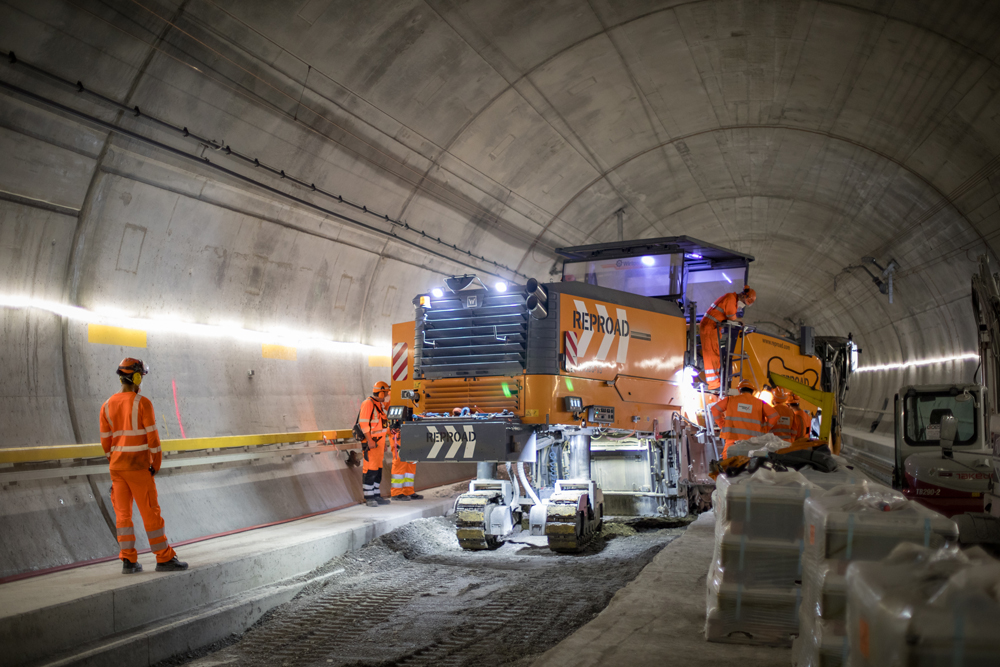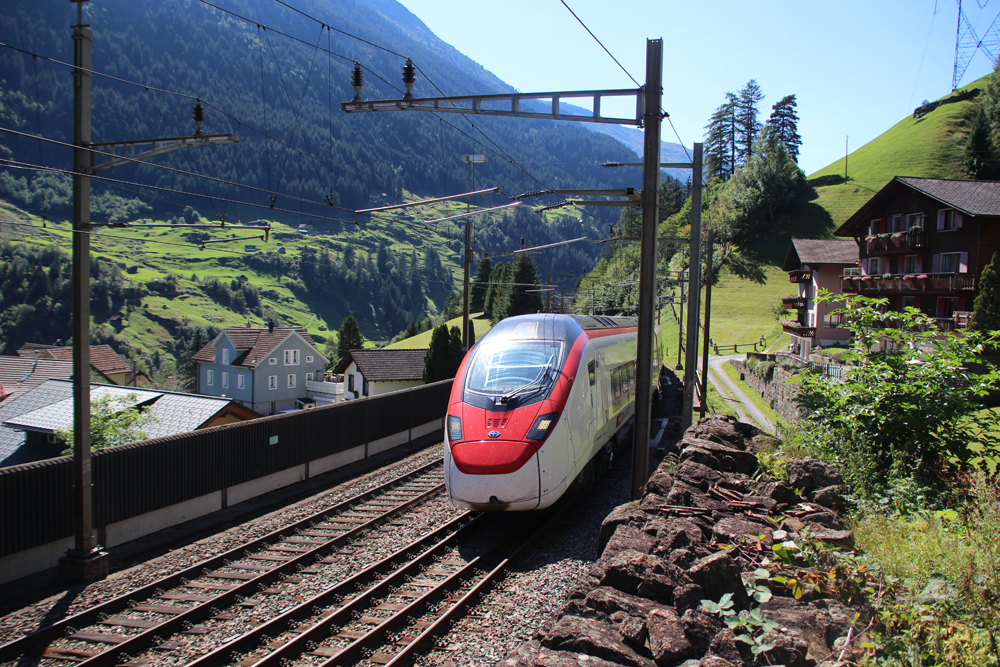
FAIDO, Switzerland — Work in the Gotthard Base Tunnel to repair damage from an August 2023 derailment is complete, SBB, the Swiss Federal Railways, announced Thursday. Plans are to resume full operations through the tunnel on Monday, Sept. 2.
The reopening will restore service in less than 2 hours between Zurich and Lugano, and end the long-term rerouting of passenger traffic, as well as some freight trains, over the historic Gotthard Pass route that had been reduced to secondary status since the base tunnel’s opening in 2016.
While repairs are complete in the west tube of the 35.5-mile tunnel, the world’s longest rail tunnel, extensive testing will take place before the resumption of service. SBB said, on its web page devoted to the base tunnel situation, this will involve running empty trains through the tunnel to test new systems, and trial operations beginning in mid-August to divert some of the trains currently using the panoramic Gotthard Pass route.
Extensive tunnel damage
The Aug. 10, 2023, derailment involved a freight train that that traveled more than 7 kilometers with a broken wheel before finally derailing at the Faido “multifunction point,” one of the locations where trains can cross over from one of the tunnel’s two bores to the other. In the process it damaged track, crossties, rail, two high-speed switches, signals, and the airtight door that separates the two bores to prevent the spread of fire or other incidents [see “Gotthard Base Tunnel repairs may take until September 2024,” Trains News Wire, Nov. 2, 2023]. The total cost of the incident, including lost earnings, is currently estimated at about 150 million Swiss francs, or $167 million.
Repair work was complicated by working conditions that include an ambient temperature of more than 100 degrees Fahrenheit, requiring extensive worker protection programs.
Originally, traffic through the remaining bore was restricted to freight use because the loss of the second bore negated the tunnel’s safety plan, but a modified plan was eventually approved that has allowed a small number of passenger trains to use the tunnel on weekends. Still, more than 100 trains a day have been rerouted over Gotthard Pass, adding more than an hour to passenger travel times [see “Gotthard Pass Revival,” Trains Magazine, May 2024].

New safety plans
While the final report on the cause of the derailment is still pending, the preliminary report from the Swiss Transportation Safety Investigation Board blamed the broken wheel [see “First passenger trains to return …,” News Wire, Sept. 28, 2023]. SBB does not have any passenger or freight equipment with the specific type of wheel involved, but they are in use elsewhere, and Switzerland’s Federal Office of Transport has called for all such wheels to be inspected and, if needed, removed from service.
SBB is also increasing early detection measures to spot equipment in need of maintenance, and is considering installing trackside derailment detectors at crossovers in and before the Base Tunnel. The time needed for planning and installing these systems, and integrating them into existing systems, makes this a medium-term solution, the company says.
Also, when the tunnel reopens, speeds will initially be limited to 160 kilometers per hour (99 mph) in the area of the crossover tracks, instead of the normal 143 mph “in order to reduce the impact in the event of a very unlikely reoccurrence,” SBB says.














Unless I was pressed for time, I would choose to go over the historic Gotthard pass route as a train passenger for the scenery, rather than suffer going through a dark, boring tunnel.
Hope that the tunnel authority has added many dragging equipment and other faulty car detections especially close to the air tight door.
As well it would be very short sighted IMO if it does not have a spare air tight door built.